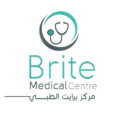Dental Advices Provided to you by: Brite Medical Center
Dental prophylaxis involves a dentist cleaning the teeth and inspecting the mouth for signs of any dental issues. Prophylaxis means preventive medical treatment.
According to the
Some dental prophylaxis treatments include cleaning plaque from teeth and checking for signs of oral conditions. People who
This article will explain dental prophylaxis, why it may be necessary, and what to expect. It will also explain preventive measures for oral health issues.
Dental prophylaxis involves looking after the teeth with regular checkups and correct oral hygiene. Regular teeth cleaning and checkups are crucial in preventing dental disease and oral health issues.
The
During the appointment, the dentist may:
Dental prophylaxis can help people avoid oral health problems such as gum disease, tooth decay, and tooth loss. The whole appointment may take about 1 hour.
Visit our dentistry hub to learn more about oral health.
Dental prophylaxis can help maintain good oral health, resulting in fewer issues over time. Regular checkups with a dentist can help with the folllowing dental issues.
Teeth feature a protective coating known as enamel. Over time, various chemicals and substances from food and drink can wear it down.
This is known as enamel erosion, which can lead to:
Regular visits to the dentist can help prevent dental erosion. Dentists can also spot cavities or tooth decay early, making treatment easier and cheaper.
Read more about dental sensitivity.
Gum disease, or periodontal disease, occurs when bacteria in the mouth cause an infection in the tissue around the teeth. This buildup of bacteria can form a hard substance that dentists call tartar. This makes the teeth even harder to clean, worsening gum disease.
According to the
A dentist will usually remove the plaque during a prophylaxis appointment. This makes the teeth easier to keep clean daily and helps avoid gum disease.
Read more about periodontitis.
The American Dental Association (ADA) says regular visits are also important because some health conditions have symptoms that can appear in the mouth. They include:
Dental prophylaxis usually refers to the teeth cleaning and assessments that dentists carry out during a routine checkup.
Dentists may also sometimes talk about dental antibiotic prophylaxis. This is when people take antibiotics before dental procedures to avoid infection. Dentists
However, doctors will rarely prescribe antibiotics before dental prophylaxis if people have had a joint replacement.
Read more about infective endocarditis.
During a dental prophylaxis appointment, the dentist may:
Dentists may also use a prophylaxis paste to clean and polish the teeth. They tend to apply the paste to the teeth using a small electric brush to remove bacteria, plaque, and stains and leave the teeth clean.
The procedure is usually a routine part of a checkup. However, dentists now know that aggressive tooth polishing
Before starting the checkup, a dentist may ask about a person’s health, recent medical history, and daily oral hygiene routine.
In terms of preparing for the appointment, people can make sure they brush and floss their teeth.
People will usually be able to carry on with their daily activities after a dental prophylaxis appointment.
Sometimes, people will need to speak with a dentist outside of their regular checkups. Individuals can consider making an appointment if:
The
Read about best practices for healthy gums and teeth.
Dental prophylaxis means looking after the teeth to prevent dental disease and health issues. It includes twice-yearly trips to the dentist for teeth cleaning and checkups. It can help people prevent oral health issues, such as gum disease, tooth decay, and tooth loss.
During the appointment, the dentist will usually examine the mouth and remove any plaque. They may also polish the teeth.
Last medically reviewed on December 8, 2022
Share this article
OUR BRANDS
Book Your Appontment with Our Dental Team Now: Call: +97444147405
